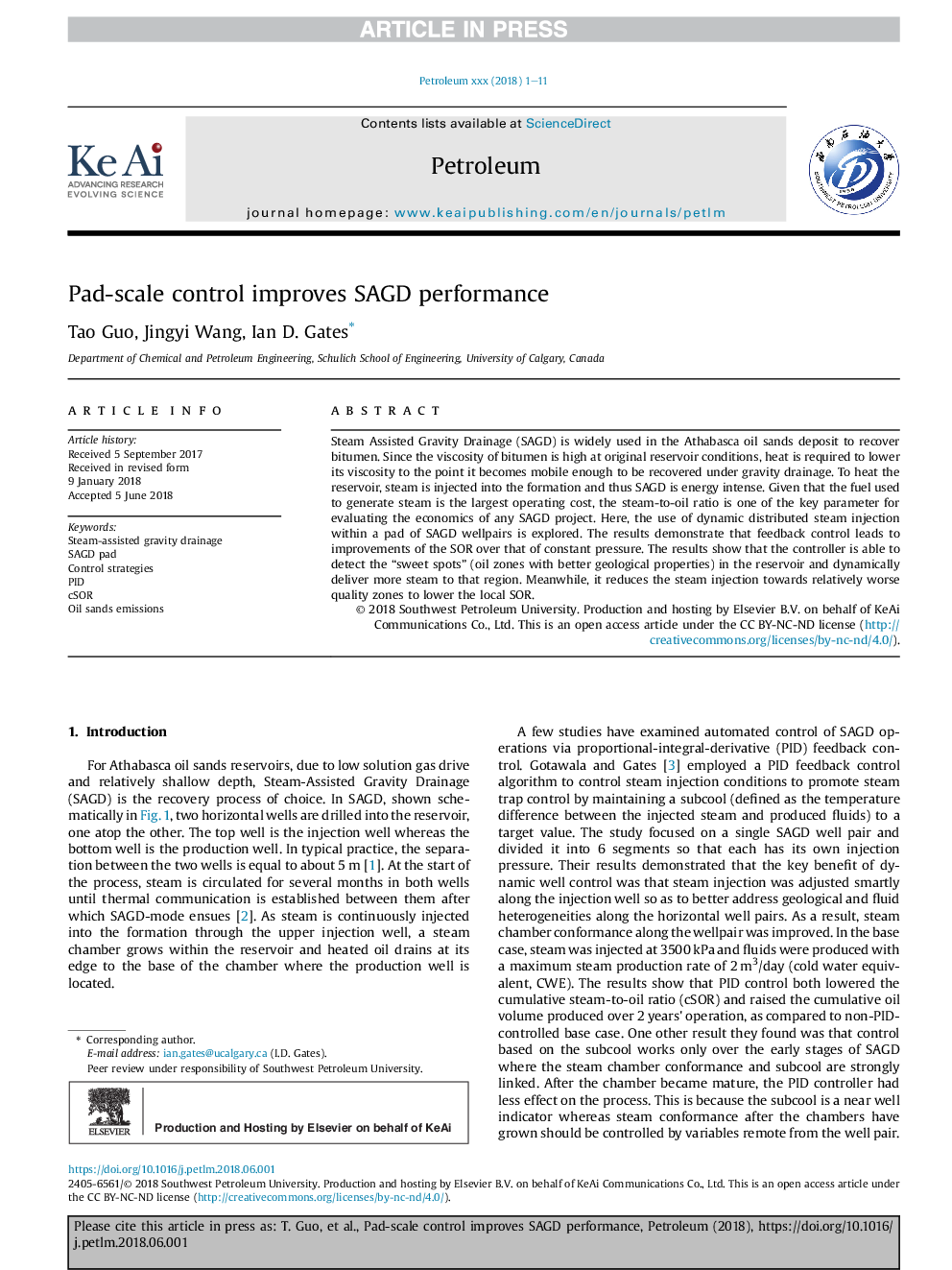| Article ID | Journal | Published Year | Pages | File Type |
|---|---|---|---|---|
| 8947779 | Petroleum | 2018 | 11 Pages |
Abstract
Steam Assisted Gravity Drainage (SAGD) is widely used in the Athabasca oil sands deposit to recover bitumen. Since the viscosity of bitumen is high at original reservoir conditions, heat is required to lower its viscosity to the point it becomes mobile enough to be recovered under gravity drainage. To heat the reservoir, steam is injected into the formation and thus SAGD is energy intense. Given that the fuel used to generate steam is the largest operating cost, the steam-to-oil ratio is one of the key parameter for evaluating the economics of any SAGD project. Here, the use of dynamic distributed steam injection within a pad of SAGD wellpairs is explored. The results demonstrate that feedback control leads to improvements of the SOR over that of constant pressure. The results show that the controller is able to detect the “sweet spots” (oil zones with better geological properties) in the reservoir and dynamically deliver more steam to that region. Meanwhile, it reduces the steam injection towards relatively worse quality zones to lower the local SOR.
Related Topics
Physical Sciences and Engineering
Energy
Energy (General)
Authors
Tao Guo, Jingyi Wang, Ian D. Gates,
